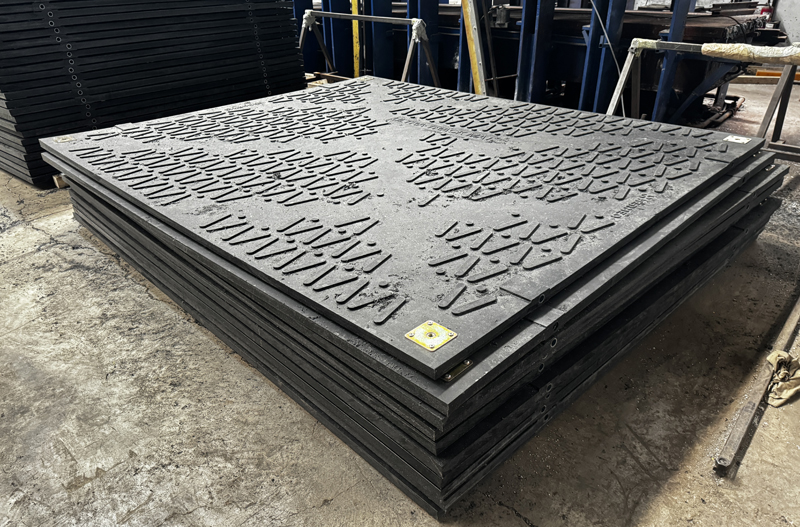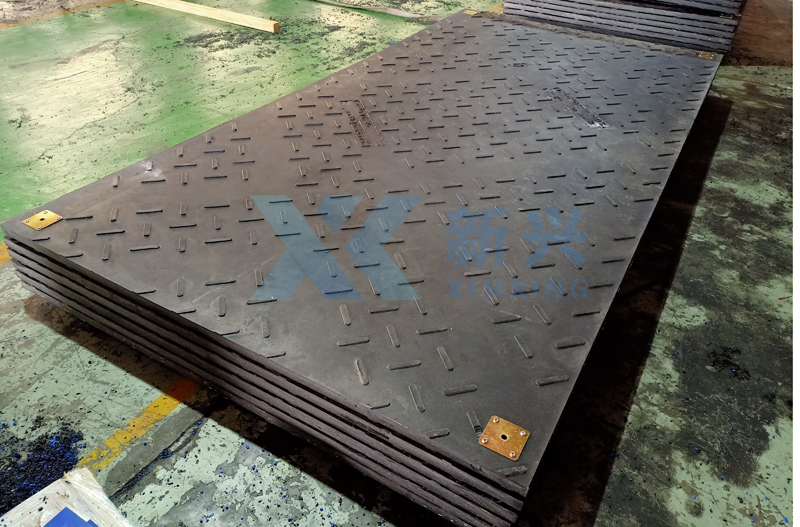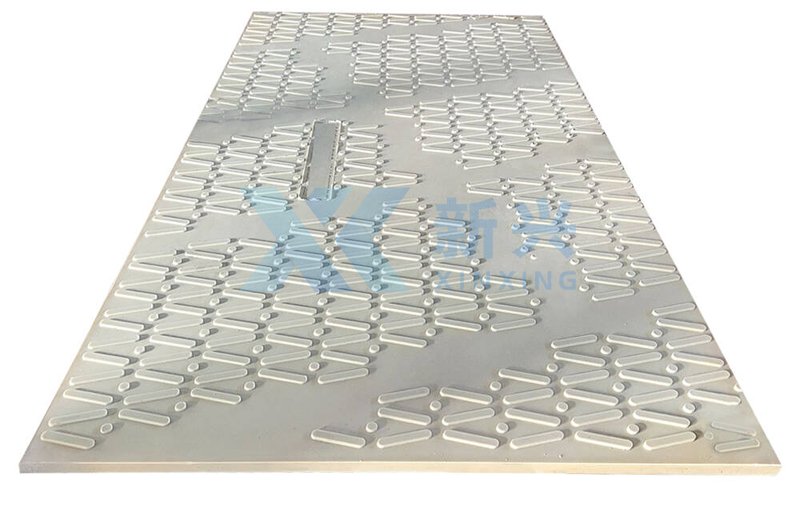Plastic road mat
Plastic road mats, usually made of high - density polyethylene (HDPE) or ultra - high - molecular - weight polyethylene (UHMWPE), are 垫板 - like materials used for laying temporary roads or protecting the ground. Here is a detailed introduction:

High load - bearing capacity: Plastic road mats can bear weights of over one hundred tons, stably supporting heavy machinery such as mine cars, cranes, and large - scale transport vehicles, making them suitable for use as heavy - duty road surfaces.
Strong durability: They are corrosion - resistant and aging - resistant, maintaining good performance under harsh weather conditions and complex usage environments, with a long service life that reduces replacement costs.
Convenient installation: They are lightweight and can generally be carried and placed by 1 - 2 people. They can be installed and spliced without special tools, enabling the rapid laying of temporary roads or work platforms and improving construction efficiency.
Good environmental performance: The polyethylene material is non - toxic and harmless, meeting environmental protection standards. Moreover, it can be recycled and reused after use, reducing the impact on the environment.
Excellent anti - slip performance: The surface is usually designed with patterns or protrusions, which increase the friction with vehicle tires or pedestrians' 鞋底,providing good anti - slip performance. Even in wet or adverse weather conditions, it can ensure safe walking and driving.
Strong customizability: According to different application scenarios and requirements, they can be customized in different sizes, thicknesses, colors, and shapes to meet various specific usage requirements.

Civil engineering and construction: In construction sites, road and bridge construction, they provide stable passage routes for transport vehicles and heavy - equipment, preventing equipment from sinking into soft ground or damaging the ground foundation structure. They can also be used to build temporary work platforms and passages.
Oil and gas: In oil field development, drilling operations, and other scenarios, they are laid on muddy or soft ground to provide stable support for drilling equipment and transport vehicles, reducing damage to the ground and facilitating the movement and operation of equipment.

Electric power and communication: In the laying of power lines, communication base station construction, and other projects, they are used as the paving material for temporary roads or work areas, protecting the ground from being rolled by construction equipment and vehicles and ensuring the smooth progress of construction.
Military field: They can be used in military base construction, military exercises, and other occasions to quickly lay temporary roads and helipads, ensuring the passage of military equipment and vehicles and improving the efficiency and mobility of military operations.
Large - scale events: Such as music festivals, sports events, exhibitions, etc., they are used to build temporary passages, parking areas, and audience activity venues, protecting the ground vegetation and providing convenient passage conditions, enhancing the organization efficiency and safety of the event.


